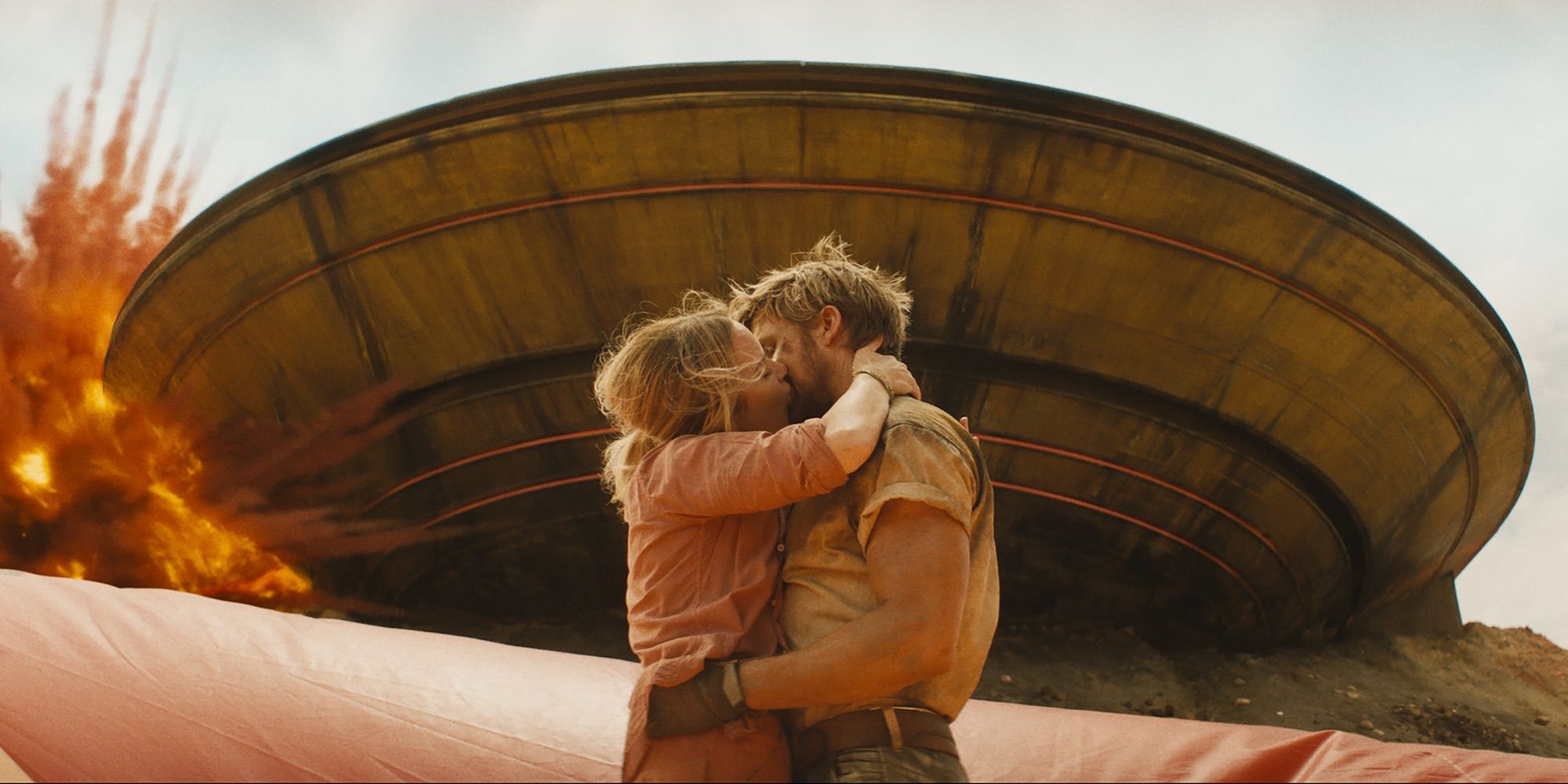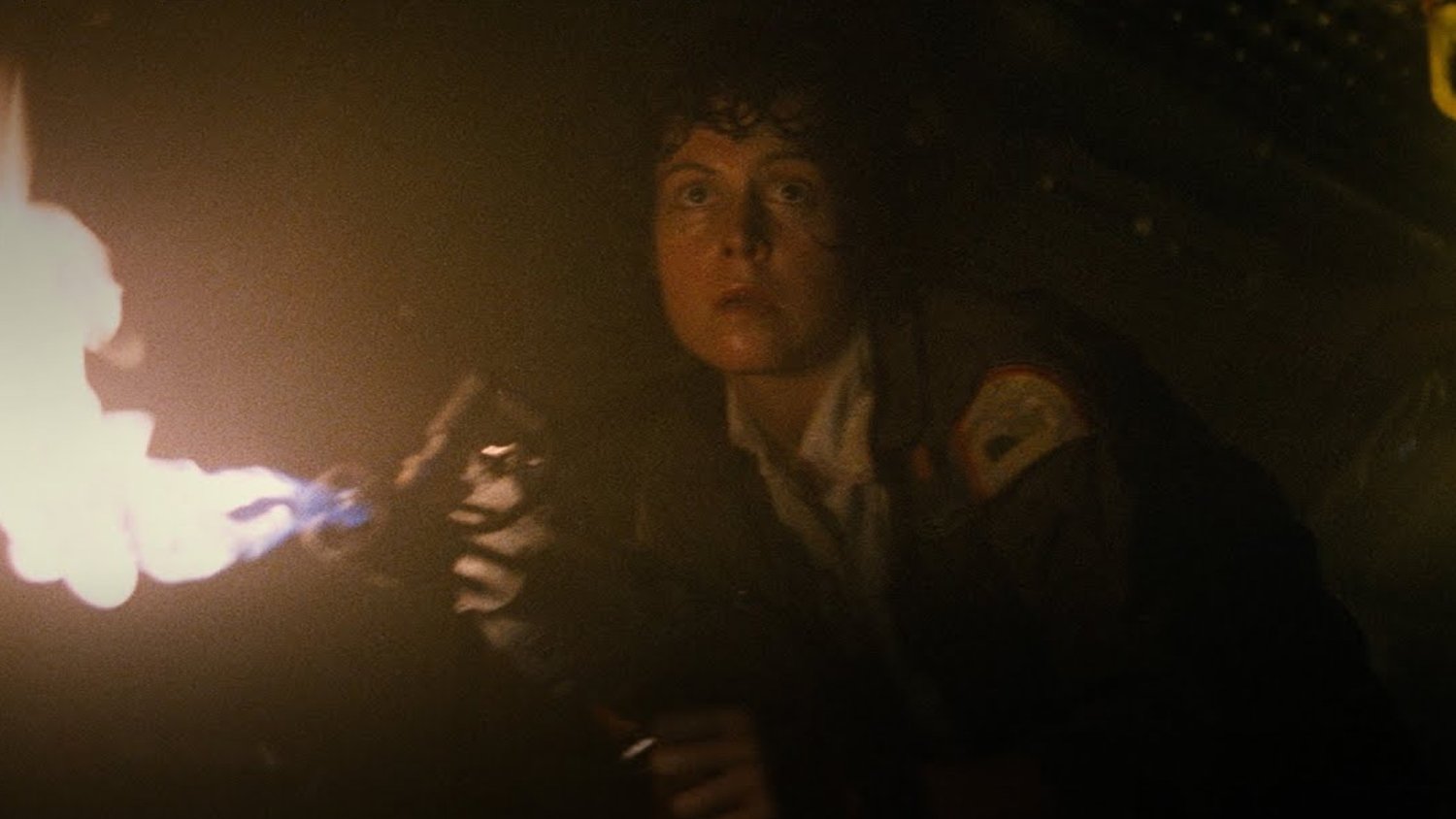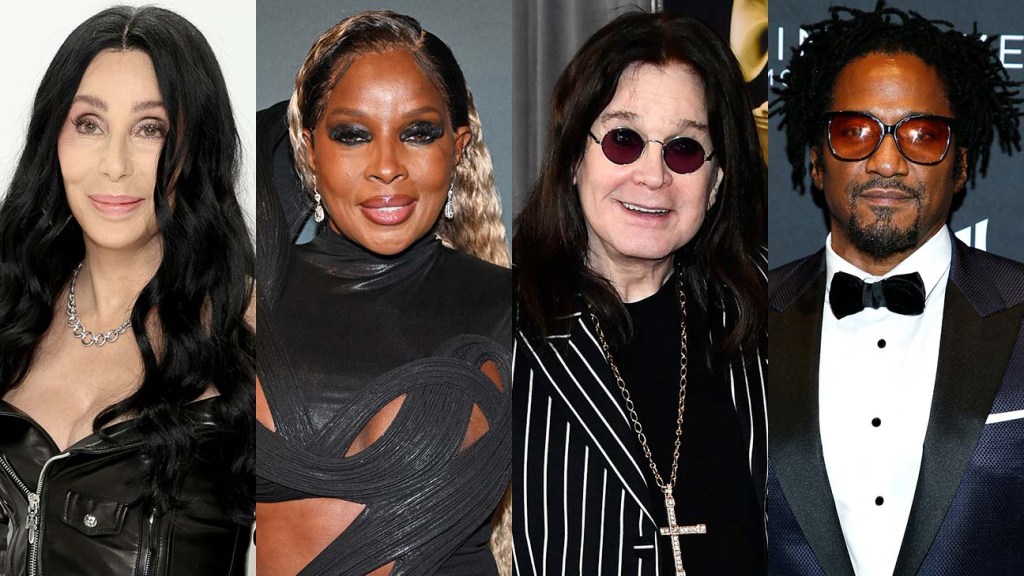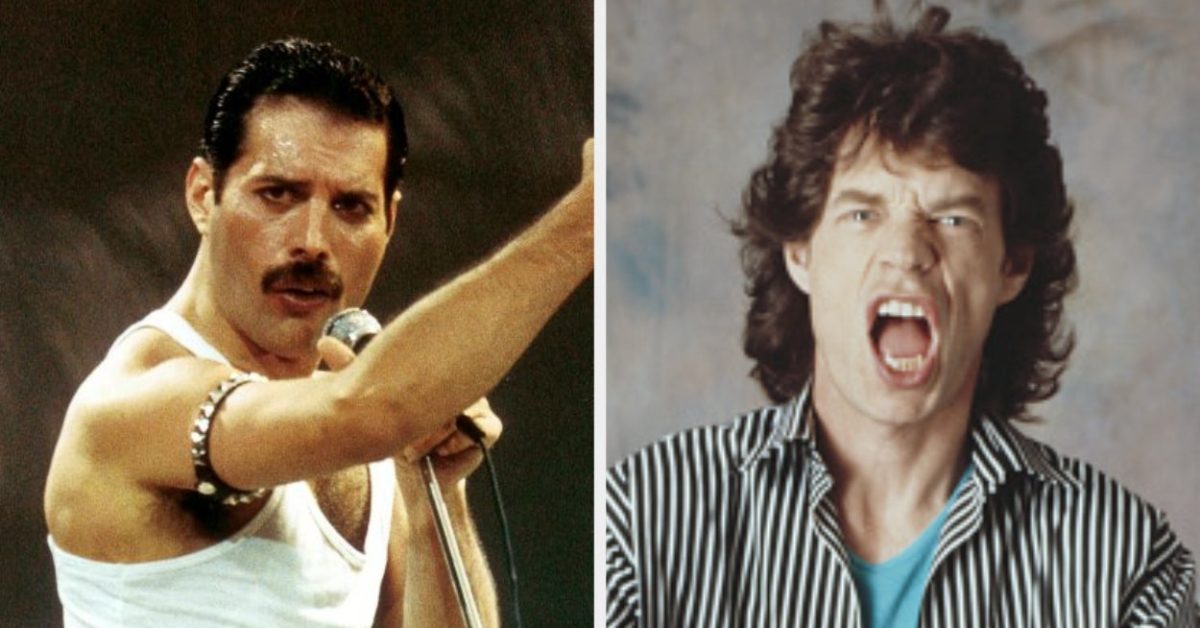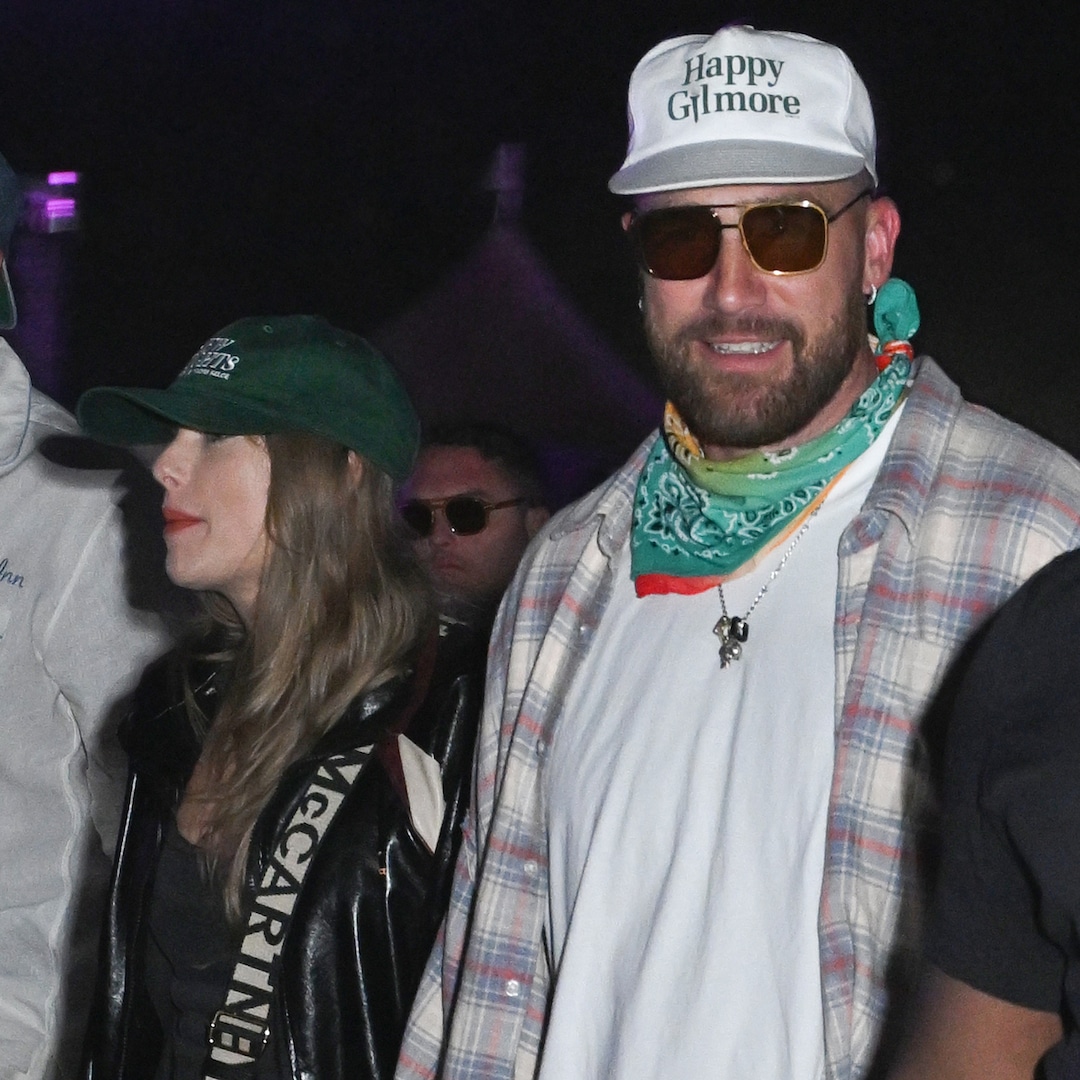
Binaural Recording, Room Tone, and Voices from the Past: Sam Green on His Documentary 32 Sounds
Apr 29, 2023
32 Sounds
When it came time to title his 2018 documentary about The Kronos Quartet, director Sam Green chose A Thousand Thoughts. Referring to an older Kronos composition, the title also spoke to the film’s approach, which was to use the music and biography of the Bay Area classical group to summon up a range of allusive meditations on ephemerality, culture, legacy and death. For his latest documentary, ostensibly about the much larger and more amorphous topic of “sound,” Green has gone in the numerically opposite direction. 32 Sounds, which opens today at New York’s Film Forum, announces itself as, a sort of structural film, the reduction promised by its title signaling, perhaps, a succession of aural/cinematic miniatures laid out for us in feature form. And while the film begins with numerical title cards, and with the individual sounds — a bird’s lonely mating call; foghorns in the San Francisco harbor at night; a Whoopee cushion — registering discretely in beautiful essayistic segments, as it progresses the sounds begin to speak to each other. The numerical intertitling becomes more erratic, soon adopting a posture of “Who’s counting?” Ultimately, rather than being a collection of disconnected musings, 32 Sounds organizes itself around themes that resonate across Green’s whole filmography: memory, permanence and the myriad ways that humans both connect and register experience.
As I note below in our conversation, sound is never noise. The film’s warm tone is established, as usual, by his characteristically inquisitive, wonder-filled voiceover. There is always human meaning and potential to be derived from the deconstruction of these sounds, never an urge to quiet. A Brooklyn man blasting Phil Collins’ “In the Air Tonight” at deafening volumes from his tricked out ride at 2:00 AM is an endearing urban eccentric, not an insensitive noise polluter. That refusal to predetermine what messages might be conveyed by a particular sound serves Green well, especially when it leads him to a personal discovery that provides the film with an unexpected emotional climax.
In recent years, Green has developed his documentaries as live events, touring them to both film festivals and performing arts venues, where he does his narration live, and composers — previously in A Thousand Thoughts The Kronos Quartet and here JD Samson — play their scores on stage. For the Film Forum run, Green has brought a sense of experimentation to the movie theater experience, equipping viewer/listeners with headphones playing a binaural mix. Some showings feature a live mixer, fascinatingly used in ways we discuss below. I spoke with Green over Zoom a week or so before today’s Film Forum opening.
Filmmaker: You’ve made a movie about sound, but why 32?
Green: I mean, sound is such a sprawling topic there had to be some framing device. One of my favorite films — and this is probably not hard to figure out — is 32 Short Films about Glenn Gould. It’s been a real reference point. The biopic is such a terrible genre in general, and what I love about 32 Short Films about Glenn Gould is that it acknowledges life — especially somebody’s like Glenn Gould — is way too complicated to reduce to [standard biopic] forms. So it does it in bits and pieces. I thought, I’m not going to make an authoritative film about sound, I can’t. I can only do it in fragments, a sort of collage of my own subjective sense of the experience of sound. And I’ve always liked that that the 32 Short Films about Glenn Gould is a reference to the Goldberg Variations by Bach, which is in 32 sections. So the multiple levels of allusion there tickles me in a way.
Filmmaker: Two years ago at Sundance you presented a shorter work, Seven Sounds. And you’ve made a short film about the composer Annea Lockwood, who figures prominently in this new feature. Was this part of a plan, to build up to the feature with shorter works?
Green: It’s like if an artist was making a big painting, sometimes they’d make studies, like drawing the hands. Both of those [shorts] were super helpful. Seven Sounds was a way to test a lot of ideas and work with JD [Samson] on how to combine sound and music and language and make people listen in an engaged way. And the Annea Lockwood [short] was [about] how to make a a cinematic portrait of someone that makes listening at the forefront. That’s not an easy thing to do because as you know, cinema is so predominantly visual.
Filmmaker: When we talked about A Thousand Thoughts, you told me that you didn’t know much about the Kronos Quartet before you started making the movie.
Green: Yeah.
Filmmaker: When it comes to sound, I’m wondering what your level of knowledge, and maybe more importantly, your lack of knowledge, was going into this film.
Green: It was very similar. Looking back, I realized, I’m a filmmaker, I’ve done sound mixes, I’ve worked with sound, so I sort of thought that I knew about sound. But, in hindsight, I knew very little about sound. It’s painful to admit that now, but I learned so much. A lot of my process and practice is research and learning. I connected with Annea Lockwood first just by writing her out of the blue and saying, “Could I just talk to you?” And we talked, and she was lovely, and we struck up a friendship. But I had many, many of those kinds of conversations, and I read a lot. Part of making the film was learning and connecting with Mark Mangini, the sound designer. Somebody put us together, and I just had millions of questions. It was only after a year or two that I said, “Hey, would you work on this project?” I learned so much about sound from him. That’s one of the great pleasures of making documentaries, I think — learning about the subject you’re working with.
Filmmaker: Tell me more about your sound design work in previous films and how the process of making those films informed the directions you wanted to explore in this one.
Green: Well, I’ve always loved music, and I’ve loved doing the sound mix for films, and I’ve been very meticulous about them. But I’m not a super technical filmmaker. I don’t know cameras really well, and I wouldn’t have known the difference between a 5.1 and 7.1 mix, or an ambisonic mic or binaural mic. So I was working in an intuitive way, but without any technical understanding. The Kronos movie was where I started to really, in a way, wrestle with the idea of listening in film. Because if you just listen to the Kronos Quartet in a passive way, they’re okay. It’s classical music. But if you engage your ears and really listen, they’re stunning. They’re majestic, they’re sublime, and [the experience] can be transcendent. So I was figuring out with that film how to get people to listen. There was one thing that [editor] Joe Bini and I came up with early on that I feel is, in a way, a key to the movie that stayed with me. In that movie at some point, I mention John Cage and the lights come up and I say, “In the spirit of John Cage, let’s listen to the room for 30 seconds.” It’s this weird moment because you’re never supposed to hear the projector. All that stuff is seen as a big distraction, but in this moment you can’t help but open your ears to listen to the sound of room. And that intervention made a profound difference for the rest of the film. In some ways, 32 Sounds comes out of that — the idea of getting people to really listen, and if you listen, it’s a different experience.
Filmmaker: There’s a direct callback moment in 32 Sounds to that moment of listening to the room in A Thousand Thoughts, which is when the audience is told to take off their headphones. That moment speaks to the journey many of us have gone on as listeners. I remember when the Walkman first came out, and the idea of listening to music while out and about was kind of radical. But then, more and more, listening to music became something done very privately, over headphones, AirPods, etc.
Green: There are a million ways [to listen], and they all have their pros and cons, I used to sit and listen to a record, to put on a record and sit there and listen to it, which I would never [do now]. You take out your phone. There’s just too much going on now for that sort of focus.
Filmmaker: Your film is full of these callbacks and call forwards. We just talked about one that went from one film to another. Another is how John Cage’s 4’33” connects to the discussion of room tone. In some ways they are the same thing.
Green: They are the same thing.
Filmmaker: One has an aesthetic function, one has a utilitarian function, one is in one medium, the other is framed within the practices of another medium. And then in the film there’s the connection between the very first sound recordings, where you note that it was the first time people could hear the voices of the departed, and your own playing of your late brothers’s answering machine messages. I’m curious about how these connections form. Do you have a giant whiteboard that you put all these possibilities on and search for connections. Do they emerge serendipitously?
Green: It’s a good question. When I started this, I thought, okay, 32 Sounds, a sort of modular film. I loved Cameraperson a lot. It’s one of my favorite movies. And I loved The Hottest August. I like that kind of way of putting a film together. And so I worked with Nels [Bangerter] because he’d edited both of those, and I thought [we’d be doing] modular editing for sure. I had put together a sort of first cut and sent it to him. I’m old-fashioned, so [I had] a pin board and index cards. The hard thing about this movie is that there’s no natural order, so we did millions of iterations. Millions of sounds came and went. There were things I liked that just didn’t seem to work. It was the hardest movie I’ve edited, by far. I didn’t know it going in, but in hindsight a movie like this has to develop in an organic way. It’s a dialogue between you and the material. It sounds cliched, but the material starts to congeal around different ideas. For a long time the assemblies I did hit what we called “the the 45-minute conundrum.” If you put a bunch of cool sounds together, it’s neat, but after 45 minutes it gets boring. You’re like, “It’s a bunch of interesting sounds with stories around them.” There had to be an overall sort of development. And then you start seeing resonances between 4’33” and room tone, or [Princeton professor and physicist] Edgar [Choueiri ], his 11-year-old self, and the scene with Annea Lockwood, where I’m asking her about seeing [footage] of herself 60 years ago and whether that’s “her” or not. These things talk to each other, and they say something about recording. So it built that way. The thing with the answering machine [in the film] is exactly how it happened [in life]. So some of its serendipity and some of it is this delicate dance between me, Nels and the material.
Filmmaker: So there were way more than 32 sounds?
Green: Oh God, yeah.
Filmmaker: You subtracted to get to the 32.
Green: Yeah, and there are ones that I’m still so sad to not have. There’s one that I just loved, which is John Cage’s stopwatch. At some point I was like, wait a minute, where is John Cage’s stopwatch, because his stopwatch was central to his work from the very beginning. I know the woman who runs the John Cage Trust. I wrote her and she said, “Oh, I have it. It still works.” I just was very taken with that, that John Cage is gone, but his stopwatch is still going. I filmed it but it was too similar to other things [in the film].
Filmmaker: In your film, sound is never noise. I don’t even think the word “noise” is in your film?
Green: No.
Filmmaker: For me this connects to your framing, your tone across all your films, which I always find inquisitive and fundamentally optimistic. The section with the guy blasting “In the Air Tonight” out of his car at 2:00 AM is a charming section on lower frequencies and urban oddballs, but if I’m trying to get to sleep, that’s noise!
Green: It’s funny, I never made a decision not to use that word. I don’t know why. I mean, in a way it does make sense that one would parse noise and sound and music and where one ends and where the other begins. But, no, there is no “noise.” In a way, Joanna Fang in the foley studio, when she takes that car door and scrapes it, that’s as close to a sound that I knew people would not like as I got. But that’s not very far. One of the 32 sounds I wanted to use was the Lou Reed album Metal Machine Music, which I love, and the story around it is so good.
Filmmaker: So there was never an intention to really go to the dark side of sound?
Green: There was one that I looked into a lot, which is noise as weapon, like what [the U.S. military] did to Manuel Noriega.
Filmmaker: And then there are things like sonic cannons.
Green: Yeah, but once it became clear that this film was going to be about sound as a way to think about time passing, ephemerality, recording and our experience of being alive, that limited it in a way. At that point, a noise cannon wouldn’t have made sense, wouldn’t have fit, because it doesn’t resonate emotionally along those themes.
Filmmaker: As someone who’s not a technical person, how did you land on the recording process?
Green: That was early on, and Mark Mangini was invaluable. When we were filming, I learned that binaural mics work with headphones but they don’t work with speakers and headphones both. They’re both spatial technologies. For those scenes with the dummy head, we also had an ambisonic mic on the stand, which was both fortuitous and good planning to have done that. But it’s really complicated. You have to make all these decisions from the beginning to know where it’s all going to end up.
Filmmaker: Did you ever think about doing an Atmos mix?
Green: No. It takes an enormous amount to make an Atmos mix and we’re not going to be in enough Atmos theaters for it to make sense. The thing is, Atmos is kind of like surround sound 360. And, as Edgar Schwerri [Choueiri ] points out, none of these [other formats] do proximity the way headphones do. With Atmos, you can’t have it feel like somebody’s right by your ear. I’m into those things, but they’re really not the way we hear things, which is what binaural recording [captures].
Filmmaker: You made The Weather Underground in 2002, which is a more traditional doc in terms of its form and the way it came out into the world. Eight years later, you made Utopia in Four Movements, which I think was the first of the live docs, or films with performance elements. And then obviously there was A Thousand Thoughts. You were really ahead of the curve in terms of understanding that the theatrical space would need to embrace eventizing and add-ons to the pure moviegoing experience. Could you talk about the durability of this approach for you — your continued return to it as well as the challenges it presents at the current moment?
Green: It’s interesting because none of it was thought out or strategic or anything like that. I made Utopia because I was stuck editing this experimental documentary about utopia, and I did a talk about it, showed things, and it worked. I did it at Sundance and then thought that’s the only time I’ll ever do it, and it ended up traveling all over the world. But it wasn’t a deliberate process. When I made the The Love Song of R. Buckminster Fuller, that’s when I met Tommy Kriegsman, who books performing arts stuff, at the Creative Capital Retreat. I had only been doing things in the film festival world, and he said, “We can do shows for a lot of money in the performing arts world.” And that opened up a lot. Who knew that the film world would seem poor compared to the performing arts world?
And then I did [A Thousand Thoughts], and the Kronos Quart has their own network of presenters, and I’m thinking, “Wow, I’m the smartest person in the world.” And then COVID happened. I never imagined a pandemic would close this world down for two years. But now with 32 Sounds, we’d done many live shows, and it is actually a financially strong model. We’re doing different kinds of theatrical versions, some with headphones. Some theaters will book it and we’ll send the headphones, and some we’ll even send somebody to mix it. I don’t want to make it sound gimmicky, because it’s not, but the sonic experience is like 3D glasses for years, and that makes it so you should go to the theater. We’re going to do a streaming version too. In my mind, at this point, if you’re a filmmaker and you’re not able to be nimble and have multiple iterations of your work and move between worlds, you’re dead in the water, in a way. I mean, I’m overstating that, but it just seems important to be in multiple worlds and have your work exist in multiple worlds because we both know the film world has been completely turned upside down. Or, at least our part of it is not what it has been.
Filmmaker: You mentioned live mixing. I think there was a live mixer when I saw the press screening at the Film Forum.
Green: Yes.
Filmmaker: What was the live mixer actually doing?
Green: That’s such a great question. So, headphones are awesome, but there’s is a very narrow signal. They don’t do high highs and they can’t do low lows. So when we have somebody in the theater mixing, and at the Film Forum that will be for one show a day, at certain points they are bring up the PA in the house. Most of the time there’s nothing, no sound. It’s just the headphones. But sometimes they’re bring the [PA] up, like in the scene with the cicadas. It’s coming out of the house speakers, and you don’t notice it but you feel it. Or when the airplane flies over, they’re bringing up the subs and making it super loud so you feel it in your chest. It’s a subtle thing, but it makes [the sound] way better.
Filmmaker: And what are you doing next?
Green: If making a film about sound with no main character, no conflict, no chronology wasn’t hard enough, I’m now making a movie I’ve been wanting to make for 15 years. It’s a documentary about trees. I’m super excited about it, and it’s incredibly fun to work on, but I still haven’t figured out how to do it. There’s the profound conundrum of how do you make a 16:9 framework with trees, which are almost always vertical. It’s very hard to figure that one out.
Publisher: Source link
Taylor Swift Appears To Slam Fans Who Condemned Matty Healy Relationship
In Feb. 2023, Matty sparked further backlash during an appearance on The Adam Friedland Show podcast, during which he laughed while rapper Ice Spice was referred to as a “chubby Chinese lady” and “a fucking Eskimo.” A range of accents…
Apr 23, 2024
Halle Bailey Says She's Suffering From "Severe" Postpartum Depression
Halle Bailey's postpartum struggles have come in waves. The Little Mermaid actress opened up about the mental health challenges she's faced as a new mom since welcoming her baby boy Halo with... Disclaimer: This story is auto-aggregated by a computer program and has not been created…
Apr 23, 2024
I Just Read That 50% Of People Under 40 Don't Know Who These Bands Are. Please Tell Me You Do.
Make me proud.View Entire Post › Disclaimer: This story is auto-aggregated by a computer program and has not been created or edited by filmibee.Publisher: Source link
Apr 22, 2024
Taylor Swift’s PDA Video With Travis Kelce Shows Their True Alchemy
"Loml": In this moving track, Taylor first sings about being called the love of someone's life "about a million times." However, the dynamic soon changed. "If you know it in one glimpse, it's legendary," she notes. "What we thought was…
Apr 22, 2024

